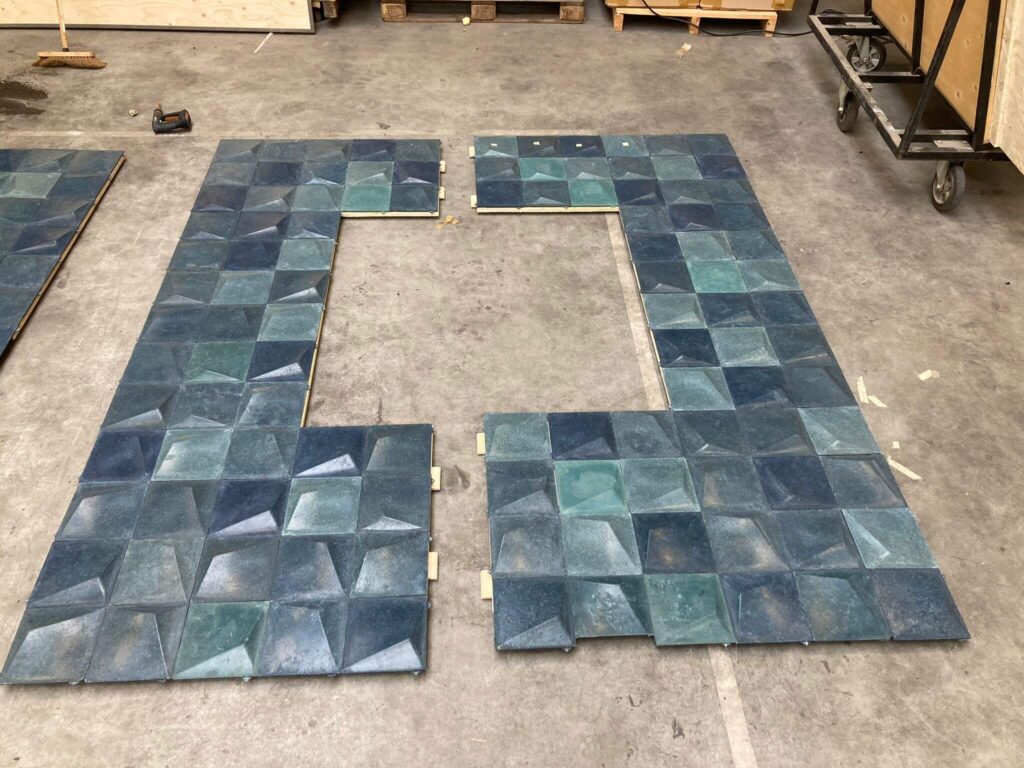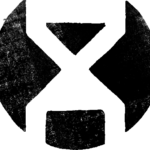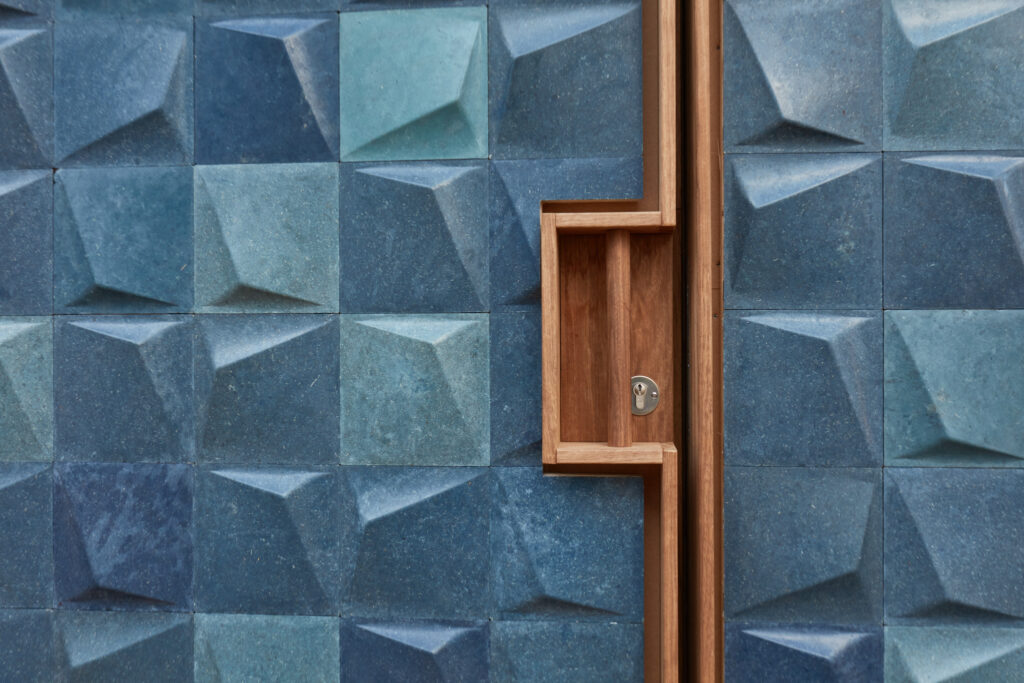This hard material consists of various residual flows: reed fibers from nature reserves and from the water authorities (now mostly composted or incinerated), cellulose fibers from recycled toilet paper that is recovered at water treatment plants from sewage sludge (Recell®), softening lime (a by-product) from drinking water companies and a partially biobased resin made from residual materials from biodiesel production. These materials are mixed into a kind of dough. This dough is pressed at 140℃ degrees to the desired product. Blue-green algae and natural indigo have been added in different proportions for different color shades. Tiles with reed fibers are distinguished from tiles with cellulose fibers in the texture, where the reed fibers are more visible on the surface.
made from
- Bio-composite made from reed fibers from nature reserves and from the water board that would otherwise be burned or composted.
- Cellulose fibers from toilet paper recovered from sewage sludge from water treatment plants.
- Softening lime from drinking water companies.
- A partial (50%) bio-resin made from residual materials from biodiesel production.
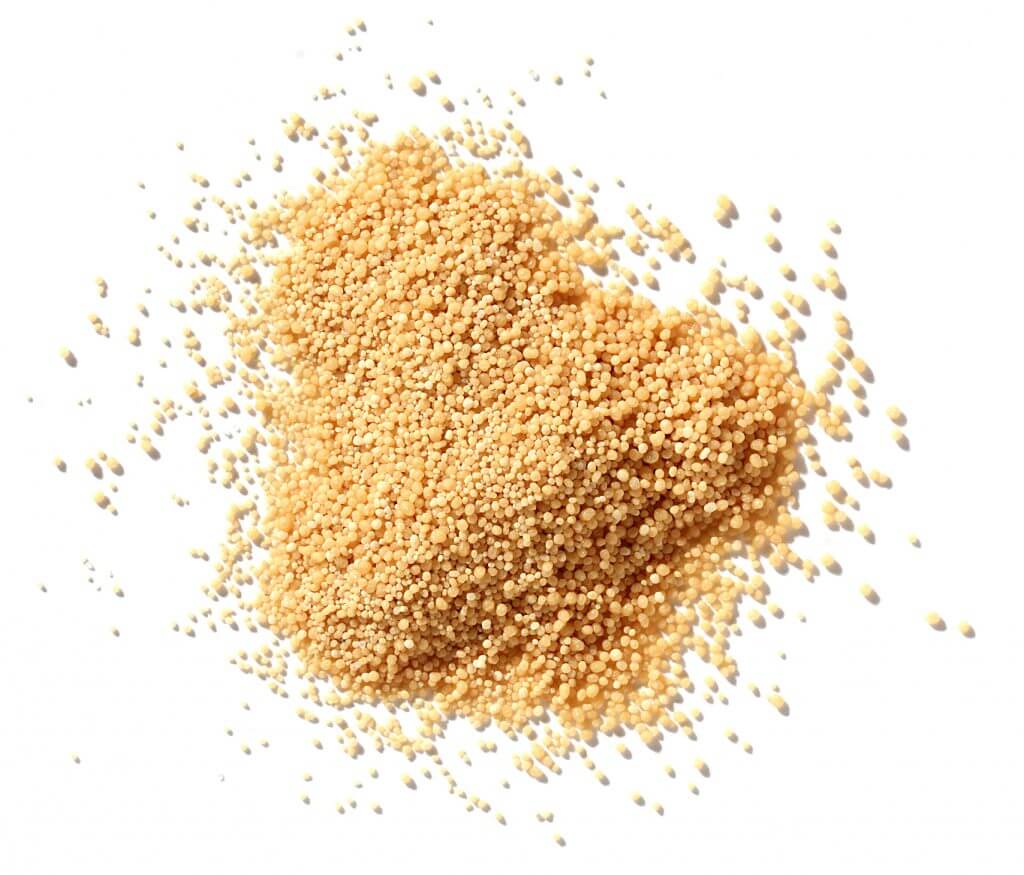
Manufacturing process
- Calcite (softening lime), cane or cellulose fibers and the resin are mixed to form a so-called Bulk Molding Compound or BMC.
- The BMC is hot pressed (at 140°C) into sheets or molded parts that can optionally be finished with a high-quality environmentally friendly PVC-free foil for UV protection.
- The sheet material is easy to process with various techniques, such as engraving, milling, lasering and water cutting.
- At the end of its life, the material can be ground for reuse in new biocomposites.
Applied
These tiles are specially made for The Exploded View Beyond Building. These are special because of their color, design and the use of cellulose. It is an exponent of the standard product line.
Nabasco® 8010 is used in building and construction (modular design facades, waterworks), signaling (traffic signs, hectometre posts, information panels; among others via POL), street furniture (including via Velopa), mobility and industrial design.
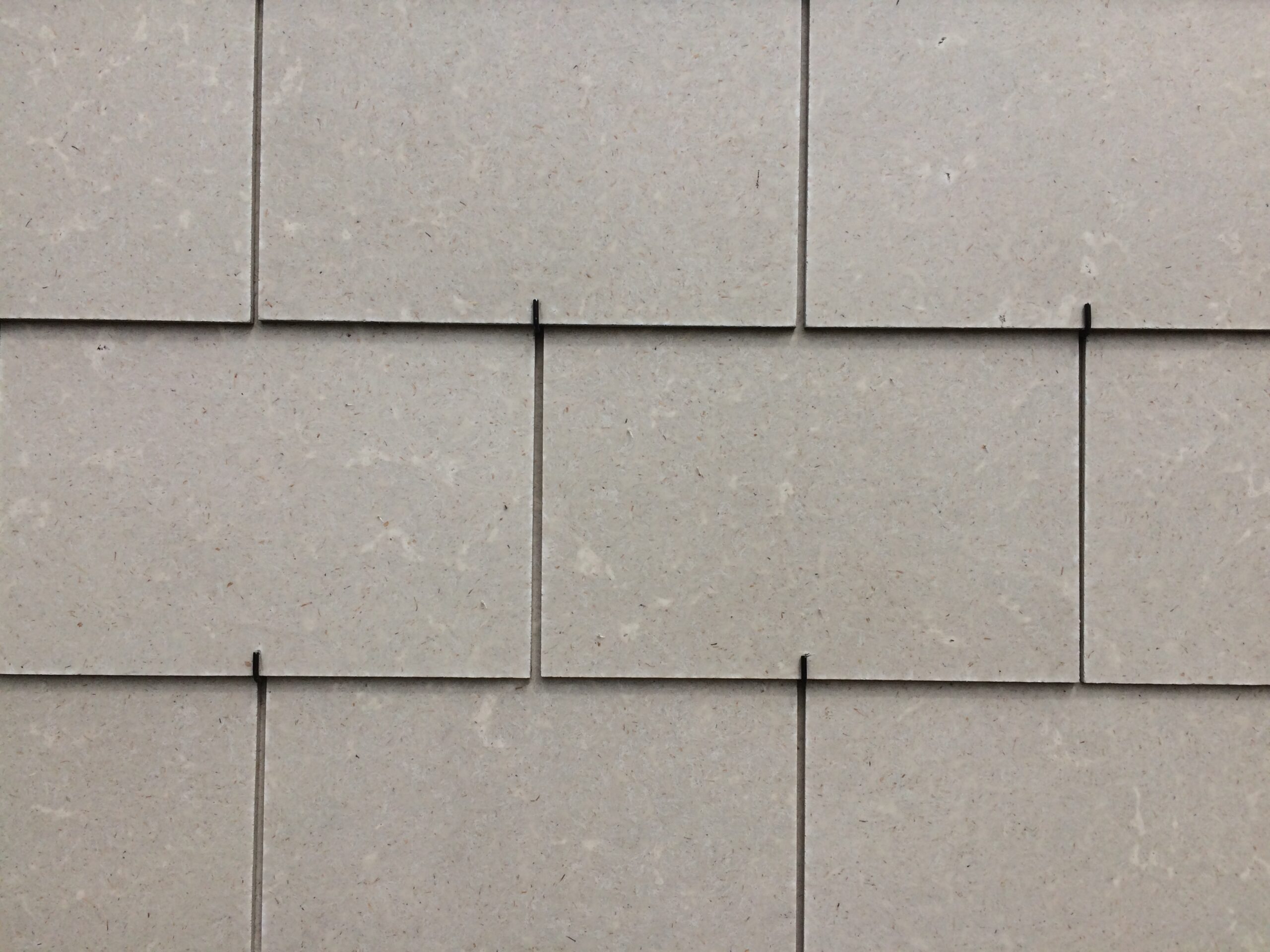
Environmental impact
- The raw materials are sourced as locally as possible in order to save on transport energy.
- Production takes place with the lowest possible environmental impact.
- At the end of its life, the material can be completely reused in new bio-composite.
- Nabasco® 8010 is >85% bio-circular and made from reed fibers from nature reserves and from the water board that would otherwise be burned or composted.
- Except for the resin, all raw materials come entirely from Dutch residual flows.
contact
